33 Orders of Insects: Neuroptera
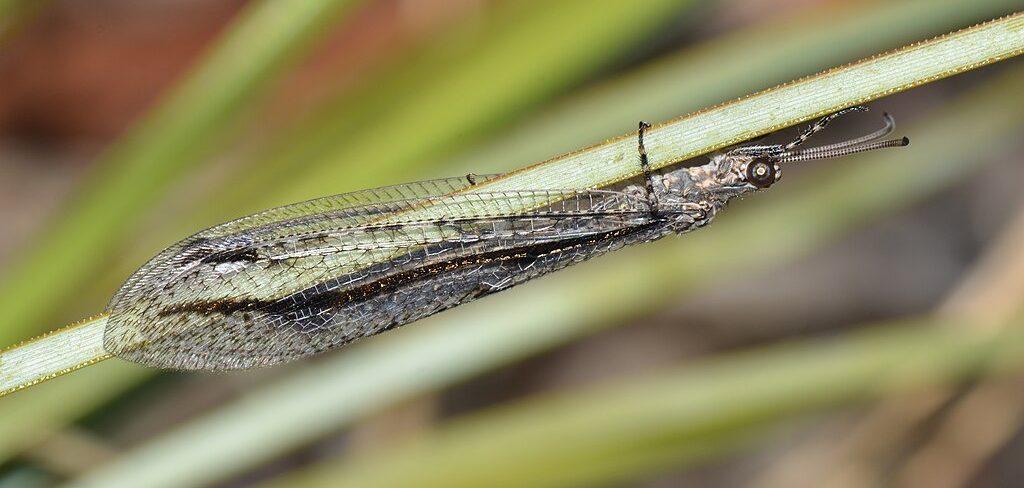
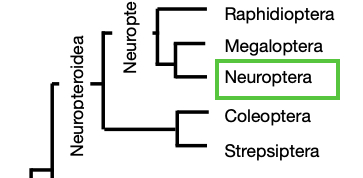
Order Neuroptera: Lacewings
Neuroptera
- common names: lacewings, mantis flies, antlions, owlflies
- from Greek: neuro = nerve, pteron=wing ; refers to the pattern of wing venation
- about 5000 spp. worldwide with the greatest diversity in Australia; over 600 described spp. in Australian
- common throughout Australia; found in most habitats
- eggs laid singly or in batches; may be scattered in or on sand, or cemented to the substrate; in many species the eggs are laid on stalks to raise them above the substrate to protect them from predation
- Larvae and adults usually predatory and terrestrial
- highly beneficial to human agriculture
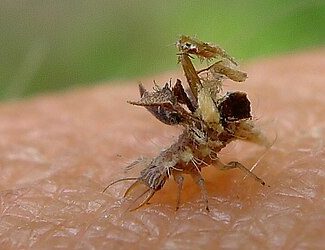
Characteristics of Neuroptera
Adults
- medium size (up to 50mm), elongate soft body
- mandibulate mouthparts; large compound eyes; multi-segmented, filiform antennae, sometimes clubbed at the end
- Prothorax often larger than meso- and metathorax
- Wings membranous, similar size; held roof-like over abdomen at rest; wings have numerous cross-veins and forked veins
- no cerci
Immatures
- immature stages (larvae) predominantly terrestrial, larvae have sickle-shaped, hollow mandibles, prognathous; ocelli present
- the gut is discontinuous (dead end) so the gut contents are not voided until after metamorphosis!
- some species have aquatic larvae
Notes
Neuroptera commonly lay their eggs on stalks in different patterns and arrangements. Species in the family Nymphidae lay eggs on stalks in a semicircular pattern in shaded areas. Every second egg produced is laid on the end of a silken stalk, and intermediate eggs are set perpendicular to the previous one and connected to the stalked eggs so that the eggs are arranged in a “U”-shaped pattern. Having the eggs on stalks is thought to add protection from predation. The tiny droplets along the stalks are thought to be defensive substances or to provide food for newly hatched nymphs.
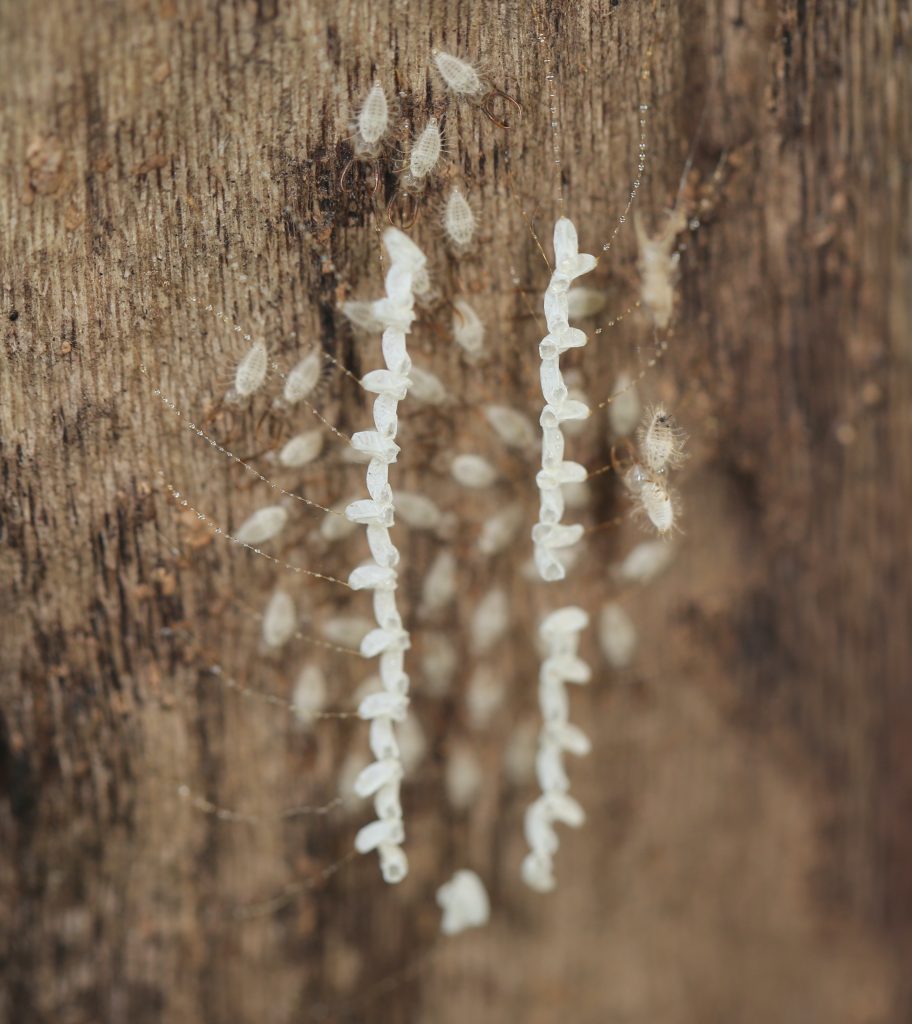
Family Mantispidae are unusual in that the adults have mantis-like forelegs to help in the capture of prey. This is an example of convergent evolution.
Antlions are larval Neuroptera that build conical depressions in dry, fine soil to trap insects walking along the ground. Their hooked mouthparts are adapted for piercing and sucking.
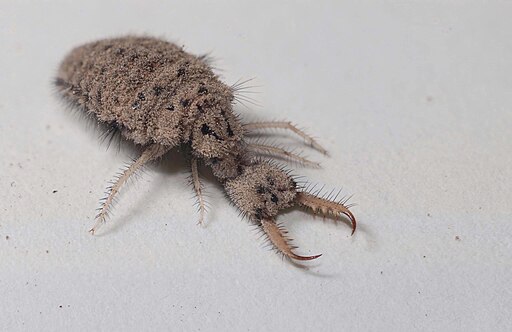
Green Lacewings as Biocontrol Agents
The biocontrol supplies company, Bugs for Bugs, based at Toowoomba send lacewing eggs in the mail. Adult female lacewings live for approximately three or four weeks and lay up to 600 eggs. Each egg sits on the end of a slender silken stalk. The eggs take approximately four days to hatch.
Larvae range in size from 1 mm at first emergence up to 8 mm just before they pupate. They have small spines on their backs upon which they impale the remains of prey. This provides a form of camouflage and allows the larvae to appear inconspicuous amongst the prey. Larvae pass through three moults over a period of 12 days before pupating inside a silken cocoon. Adults emerge after nine days and start laying eggs seven days after emergence.
They target pests such as aphids, mites, whitefly, scales, and mealy bugs.
Keen to learn more?
Check out this paper on the Chemical Ecology of Neuroptera
Topic Review
Do you know…?
- the main anatomical features of immature and adult lacewings
- the economic significance of lacewings

